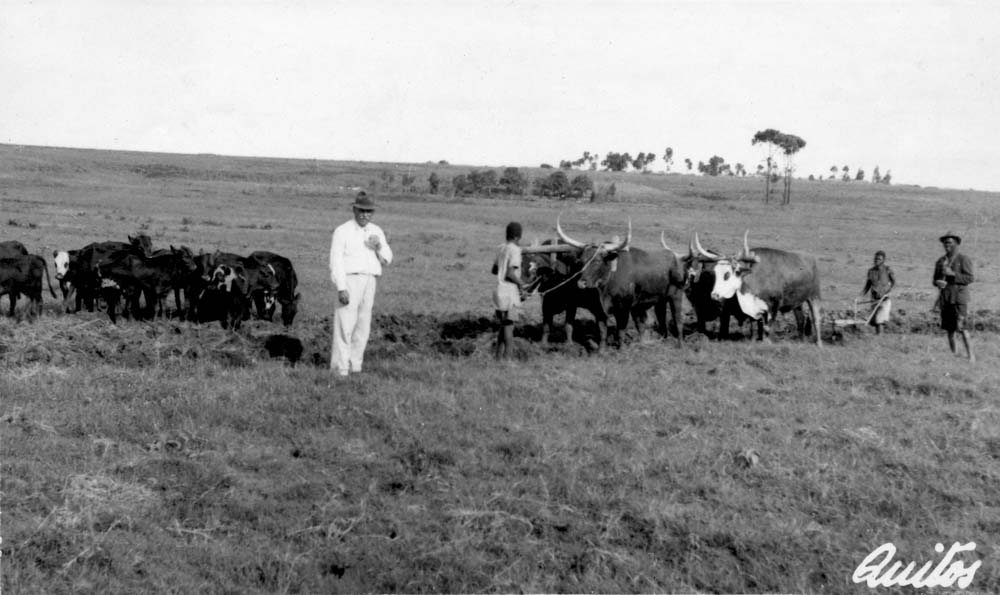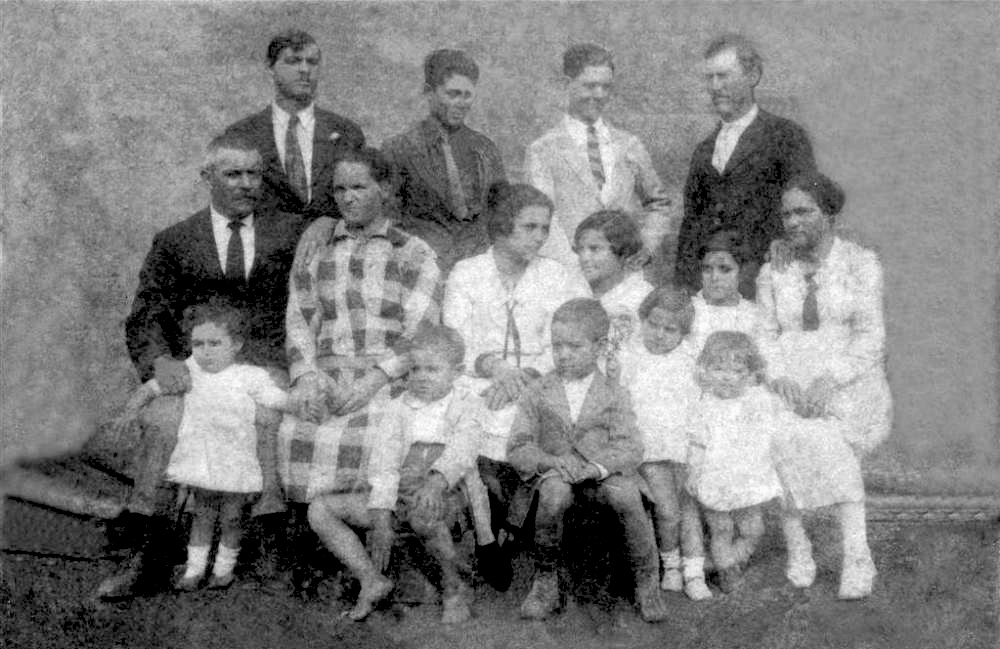

Some days the journey would start under a cloud of bad luck. Bad weather would make the terrain soft and the boer wagon would bog down. Many times uncle Albino told me, that it was then time to engage the "four wheel drive".
Normally the oxen would pull the wagon with the collar of the harness around their necks. This position of the harness would be more comfortable and allow the animal to pull for long periods of time.
However when extra force was required to pull the wagon from the mud or loose sand, the "four wheel drive" of uncle Albino was engaged: the collar was attached to the oxen's horns.
Bad weather was not the only problem they faced during their trip. Equipment breakdown would frequently cause delays. A broken axle or wheel would take several days to repair depending where the problems occurred. If there were no trees big enough nearby they would have to go back to the last place where they saw then and cut the right bit, similarly to what we do today when we need a spare part for our cars.
Only then, the shops were much bigger and the shop assistant would not be rude to you if you made a mistake and cut the wrong bit.
Jacks,chain saws and other electrical tools, lathes did not exist in the Angolan jungle and instead crude hand tools and manual skills would turn green tree trunks in axles and wheels. The fitting of the metal rim to the wooden wheel, a fit so tight that would stay in place under most conditions, was achieved with help of fire to expand the rim and allow it to slip into the new wheel.
For seven months the Costa's roam through the savanna in the central plateau until they reach the source of the Cubango (Okavango) river and a place called Chimbondo.
Chimbondo is part of the Bié hydrographic basin, were all the big Angolan rivers start. Cuanza, Cunene, Cubango, Cassai, Cuando all start in the Bie plateau. Plenty water and good soil were the ingredients that Antonio and his brother Albino were looking for and with the wet season approaching they decided to stop and start making that place home.
They had to clear the bush and plant the wheat and corn to take advantage of the rain that for 9 months in a year fall in the plateau.
Planting the cereals were the first priority and once this task was completed they started building a house using adobe bricks and elephant grass as roofing material.

António plowing his land in Chimbondo

The Costa family in 1931